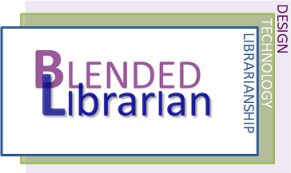Whenever the Blended Librarians Online Learning Community has held a webcast with instructional designers – which we’ve done quite a bit over the years – we will get a frequently asked question:
What’s the best way that I can become an instructional designer?
And if we have a webinar with a blended librarian who is doing instructional design work, attendees will want to know more about how that librarian developed their instructional design skill set. Often times it is a mix of pre- or post MLS coursework in instruction design (as is my own experience), on-the-job learning, attending workshops and bootcamps, but mostly it’s about experimenting and learning how to use the educational technology tools.
So there is no one single path to becoming an instructional designer – or if you are a librarian – to picking up the necessary skills to transform yourself into a blended librarian or what is often described as an Instructional Design Librarian.
If you are just now asking this question, you may want to take a look at “The Instructional Design Starter Pack“.
Over at EdSurge, Amy Ahern has organized a list “of the lessons and resources that I wish I knew of when I first went on the job market”. In eight lessons she shares some valuable ideas and strategies – along with the resources – for would be instructional designers. Here are a few of them:
Ground Yourself in the Fundamentals of Learning Science. I couldn’t agree more with that piece of advice. I learned more in my first pedagogy course about how people learn and what it means to be an educator who teaches with an understanding of learning science than I did in 20 years of academic librarianship. I continue to build on what I know about learning science through teaching and learning workshops, new studies and paying attention to what instructional designers are saying about new ideas in pedagogy.
Go Study Other Great Teachers and Other Great Learning Experiences. When it comes to library leadership I strongly advocate advice like this – you learn how to do it better by following the examples of great leaders – what they get right and what they avoid that’s wrong. This certainly goes for instructional design for learning as well. If you know someone that serves as a model for excellent instruction and the use of educational technology, try to learn from them.
Determine the “Powerful Ideas” You Want to Teach and Build Your Curriculum Using Backwards Design. A good starting point for many librarians who are interested in design is becoming familiar with the basic models, such as ADDIE. But there are quite a few others (Pebble in the Pond, anyone?), like backwards design, that make great sense for designing instruction programs. The strategy of starting with outcomes and then working backwards to design learning activities and then assignments for assessment is gaining in popularity.
If “just starting to learn about instructional design” describes where you are, then I heartily recommend what’s being described as a “starter pack”.
And even if you’re not so new to instructional design, it may still be worth your time to check out some of the listed resources.
